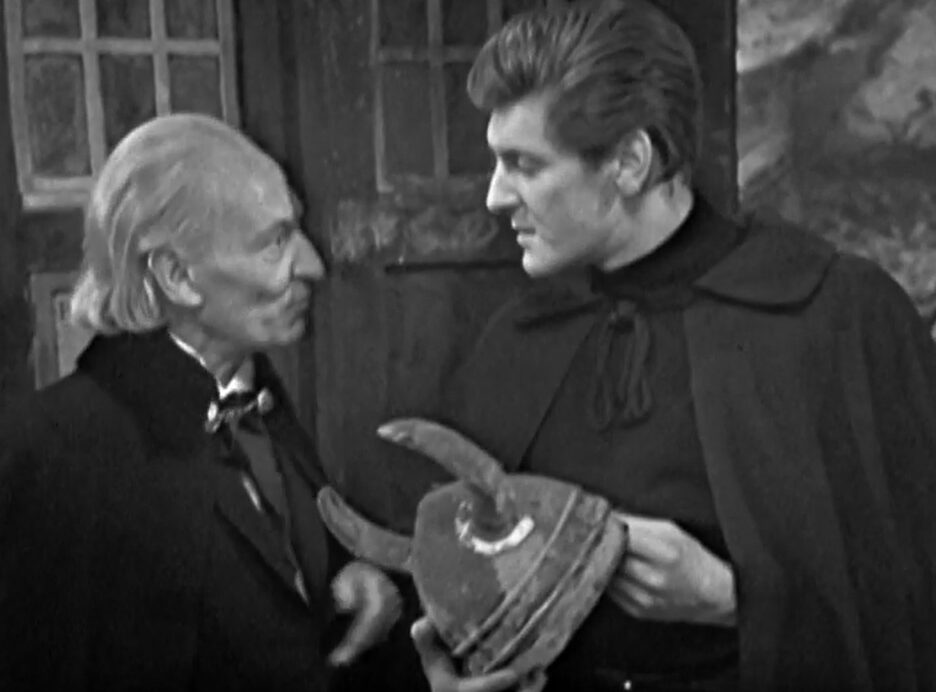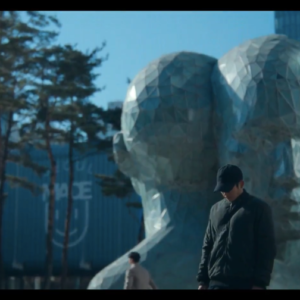By Eazal
My Doctor Who watchmate, Eazal, is an afficionado of mediaeval clothing and expends considerable time into recreating and wearing clothing from various periods. She had very strong opinions on the props and clothing in The Time Meddler and has graciously shared her expertise in this guest post.
Clothing in The Time Meddler
I know fiction is fiction, Doctor Who is not a History documentary, The Time Meddler is not supposed to be an authentic portrayal of Middle Ages in Yorkshire, and that TV in the 1960’s was not all about accuracy. I get all that, yet I was expecting something more from BBC, call me a fool.
Costume accuracy is usually put aside in most TV shows and movies, sometimes intentionally, sometimes because there is no money for proper consulting, but most of the times is because no one is really bothered about it, and basically thinks… who cares? Guess what, I do. And it is a pity, because doing things wrong takes as much effort, time and money as doing them right. It takes very little to have the sort of costume accuracy that fits any fiction.


When the Doctor and companions arrive at their destination at the beginning of The Time Meddler, they find a helmet with two horns. The Doctor uses this as evidence that they’re in the past – after all, it’s a Viking helmet! We all wished it were a Viking helmet. There is no evidence (now or in 1960’s) that horned helmets were used by Vikings other than maybe some rituals. But popular culture is powerful, so horns we have.
Shortly after, the Doctor meets some villagers, and what do we get? Perfectly neat and clean loose hair in women. This happens all the time, mainly because the audience is more comfortable with a modern haircut. In fact, for a very long period of time there were only two kind of women who would leave their hair loose: little girls and prostitutes. Really? Really. And Edith didn’t seem to belong to either group. A working woman would have her hair tied, and also covered (veil, cloth). Think about it. Have you ever seen any woman doing physical labour (working the land, washing clothes, cooking, sewing…) while her hair falls in on her eyes so she can’t see? I haven’t.

And what about Edith’s clothing? There are so many things that are wrong: she is only wearing a tunic with no chemise (a lighter piece of cloth that would be used also to sleep); her tunic covers only up to her knees when it should be down to her ankles; she’s wearing sandals with some very fashionable laces around her legs (as a working woman she should have some more solid footwear and her legs covered with some kind of cloth to keep her both warm and safe from any wound); her hair would be covered and tied as said before. At least Edith’s arms are covered, one of her female friends has bare upper arms and equally bare legs.
Many tend to think modern viewers would not tolerate an accurate look, because it is “ugly” from our present point of view: layers and layers of clothes can not compete with a sexy look, or the idea we have now of what is beautiful or comfortable (how many times have you heard how uncomfortable corsets are? As someone who has worn corsets from different periods the answer is: They are not). We judge clothing with our present standards and that is why producers usually try to make us feel more comfortable by using concepts we are familiar with, specially with women. So the next time you think about how Middle Ages women dressed, remember this: nuns look like women in Middle Ages looked like, not the other way round, and “ugly” is not a thing.




I enjoyed this post Eazal and it made me think somewhat. The accuracy of clothing and grooming is always something that runs through my mind when watching a show or film. While watching the final series of “Endeavour” the other night, I couldn’t help but note the collars on the shirts. Even with the current version of “All Creatures Great and Small,” I have enjoyed the attention to detail.
With Doctor Who, there is no doubt we have moved a long way away from the generic props that would inhabit the wardrobe at a tv station. It’s perhaps, not until we get to, well to my mind at least, Tom Baker’s “The Talons of Weng-Chiang” (Series 14 finale) we have a story that is recognised for its accurate portrayal of Victorian clothing and hairstyles. The story itself had a big budget and it shows. With New Who (at what point do we stop calling it that?), costuming is very much a focal point in many episodes. Even the many different sets themselves have a level of legitimacy (I’m sure it’s not all CGI).
I have often wondered about the comments surrounding how uncomfortable corsets are – thank you for clearing that up. And why do producers always try to make us feel comfortable? I have never thought we were that fragile. My daughter has been the production designer on shows and films and has always fought to the bitter end to be as accurate as possible. I find it all very interesting 🤔
As I said in the post, I know where and when we are when we were watching this episode, but even so, the inaccuracy on clothing it’s still too common nowadays. British dramas are usually an exception, they do pay a wonderful attention to costume and details, but it doesn’t happen all the time (for instance the latest BBC version of War and piece had so many inaccuracies I just couldn’t watch: silk gloves instead of kid gloves, seams out of place, wrong figure, loose hairs, even a sleeves dress…), and mainly because instead of trying to make understand the viewer why things are like this, they just go with “surely you’re more familiar with this”.
Regarding corsets, if a corset feels uncomfortable it’s just because you are wearing it the wrong way or the wrong size, just the same way you would feel uncomfortable with a bra that is too big or too small for you. I could write an essay on that but I will just leave you here a link to a video by Karolina Zebrowska that explains it much better than I could ever do: https://www.youtube.com/watch?v=zNwTqanp0Aw